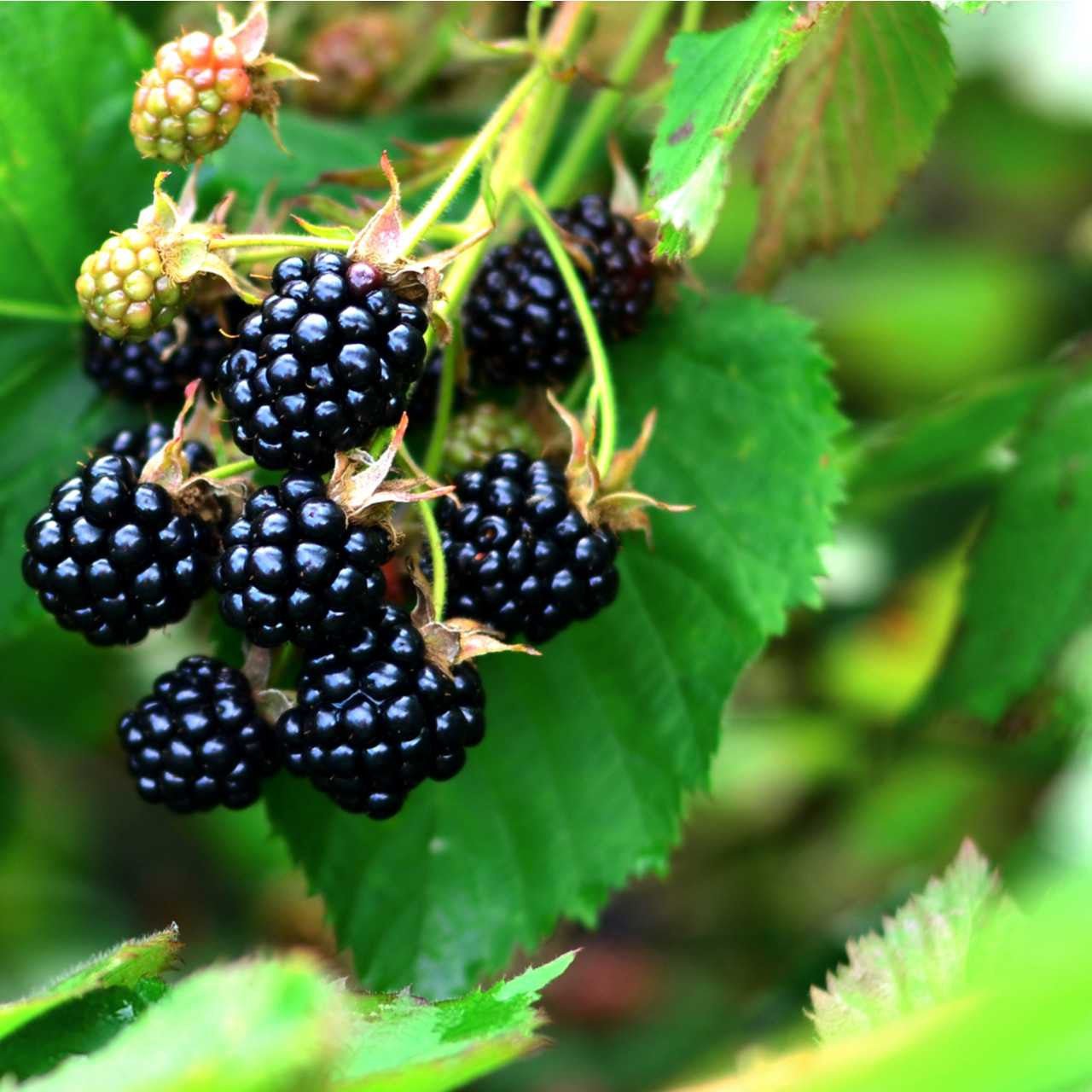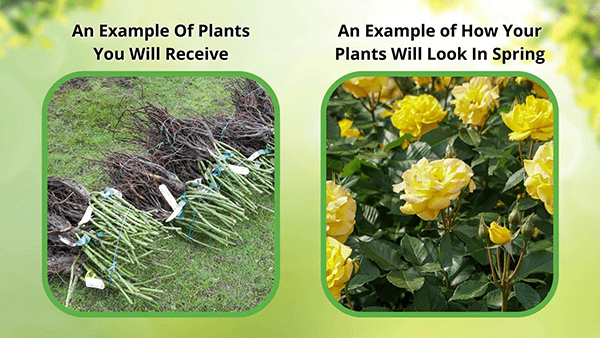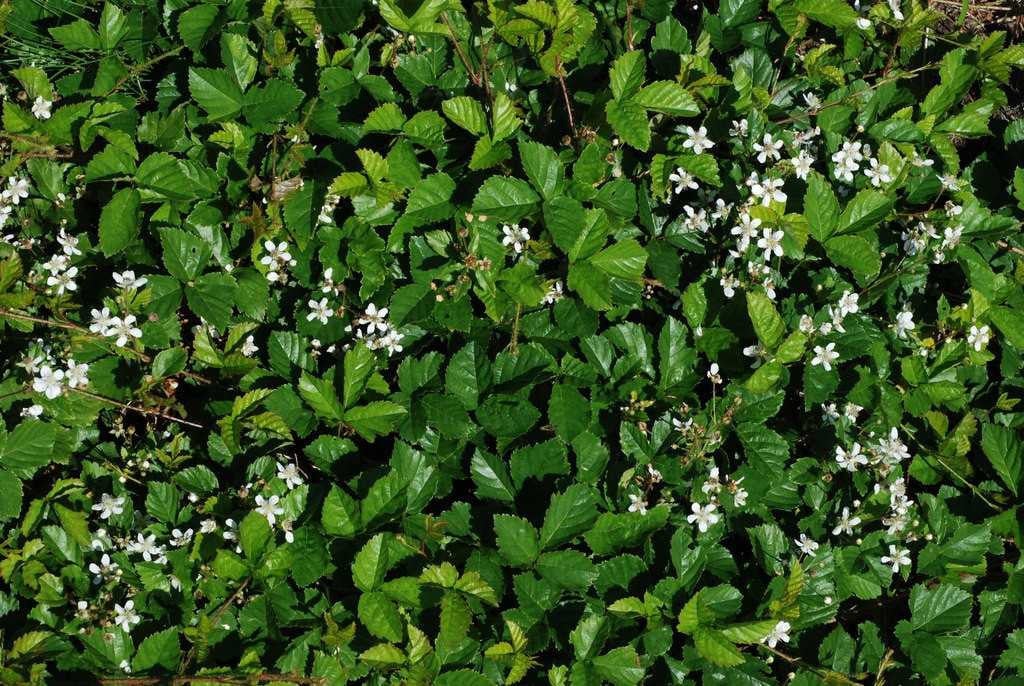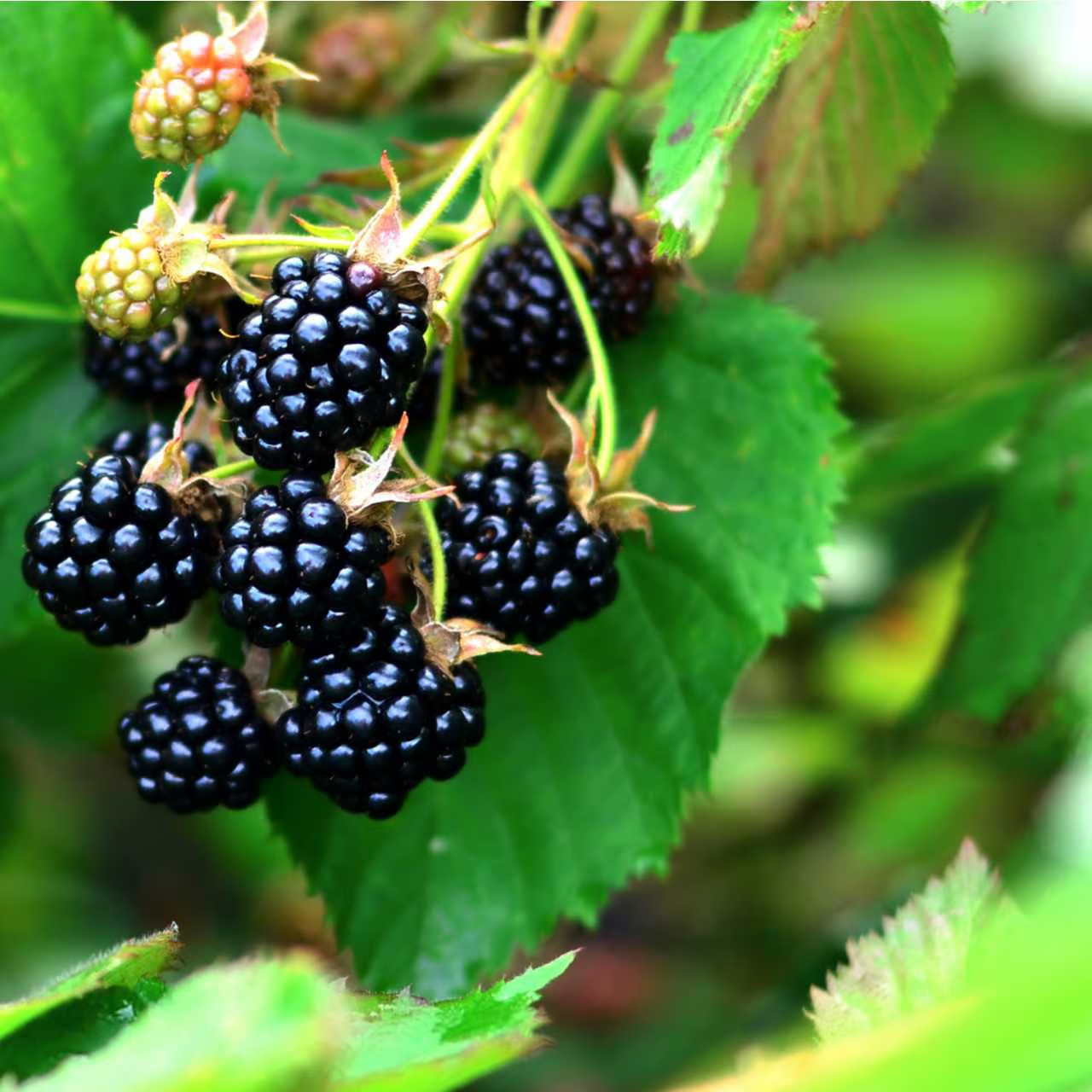



Dewberry Plant
Low-maintenance, hardy plant choice
Resistant to many pests and diseases
Attractive foliage and white blooms
Thrives in
ZONE 5ZONE 6ZONE 7ZONE 8ZONE 9This plant ships:
Ships Week of May 19th1 Year Guarantee on all plants
Dewberry Plant - Rubus flagellaris
The Dewberry Plant is a fruit bearing perennial, whose small, sweet berries are the lesser known sister of the common Blackberry. The plant is native to the southern and midwestern United States and the berries are especially favored in those areas for pies and jams. Before the berries burst out in the summer, delicately beautiful white flowers are found in their place. The spring and summer interest of this resilient US native bring year round beauty to your native or woodland garden.
Plant Details - Dewberry Plant
Family: Rosaceae
Light Requirement: Full sun, Partial shade
Water Needs: Moderate
Height: 1-3 ft
Spread: 3-6 ft
Growth Rate: Rapid
Soil Preference: Moist
Bloom Time: Spring
Flower Color: White
Wildlife Value: Mammals and birds eat the berries, nectar pollination
Notable Characteristics - Dewberry Plant
The Dewberry Plant is naturally named for the delicious Dewberries it produces. It is a sprawling shrub with tangled, woody stems covered in thin hairs and small, red thorns. It is an aggressive spreader, and its thin, vine-like branches can easily spread up to six feet in your garden. Amidst the small, toothy leaves, it bears tiny white flowers. The five round petals circle a green center. By summer, the flowers have died back to reveal an arching cluster of small, red berries that deepen to purple-black as they ripen.
Landscape and Maintenance
This wild, thorny, and beautiful plant is native to the moist thickets, open woodlands and meadows of North America, so it is a resilient and hardy plant. The Dewberry Plant prefers full sun and is able to tolerate partial shade, but has a tendency to grow rapidly in multiple favorable conditions. The berry plant is attractive to the whole wildlife community, as many small mammals, birds and insects eat the berries and spread the seeds. The leaves are highly attractive to rabbits and deer, however, so in a home garden, be sure to add extra protection so these hungry creatures won’t damage this stunning plant!
This Is How Your Plants Will Look upon Delivery

Bloom Season
Summer
Bloom/Foliage Color
White
Height at Maturity
Under 10 Feet
Care
Dewberry plants thrive with regular watering and well-drained soil. Prune annually to remove old canes and encourage new growth. Fertilize in spring for optimal fruit production.
Shipping date depends on the date displayed and chosen when you order from the product's page.
We only accept returns on plants verified dead. If you think your plants have died, we offer a 1 year warranty, please use this File a Claim Link to verify dead plants and start with return warranty process.






High Yield:
Dewberry plants are known for their high yield, providing an abundant harvest of berries. This ensures you’ll have plenty of fruit to enjoy throughout the season.
Versatile Growing Options:
Dewberry plants can be grown in the ground or in containers, making them a versatile choice for different garden setups. Their adaptability allows you to enjoy fresh berries no matter the size of your garden.
Delicious Berries:
Dewberry plants produce sweet, juicy berries that are perfect for fresh eating, making jams, or baking into desserts. Their unique flavor is a delightful addition to any kitchen.
Hardy and Low-Maintenance:
These plants are hardy and require minimal care, thriving in a variety of soil types and climates. Their robust nature makes them ideal for both novice and experienced gardeners.
Caring Tips
How do I care for my Dewberry Plant?
Each box contains detailed care instructions and information about your product. But here's the basics.
Care Tips
Dewberry plants thrive with regular watering and well-drained soil. Prune annually to remove old canes and encourage new growth. Fertilize in spring for optimal fruit production.
Light Requirements
Dewberry plants thrive in full sun to partial shade. They favor at least 6 hours of natural daylight daily but can take some shade, especially in hot climates where partial shade helps protect them from excessive heat.
Hardy Planting Zones
5 • 6 • 7 • 8 • 9
Header
Use this content to share information about your store and products.
Frequently Asked Questions
How often should I water my plants?
How do I know if my plant is getting too much or too little sunlight?
What should I do to prepare my plants for winter?
What are the signs that my plant needs fertilizing?
How can I prevent pests from damaging my plants?
How do I choose the right plant for my climate zone?






